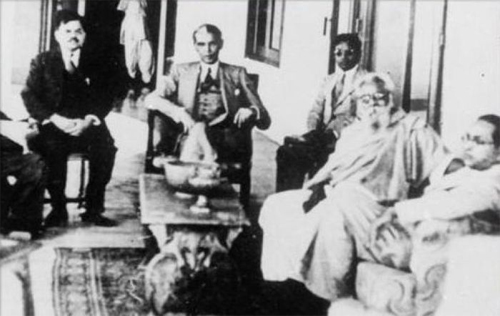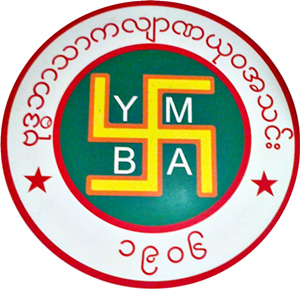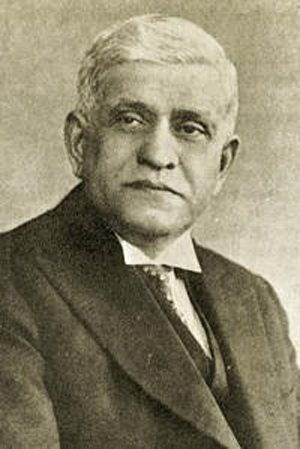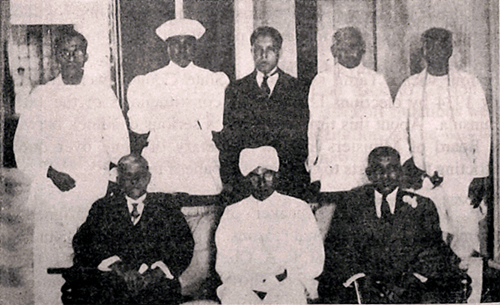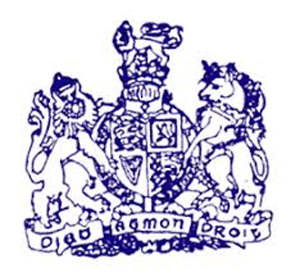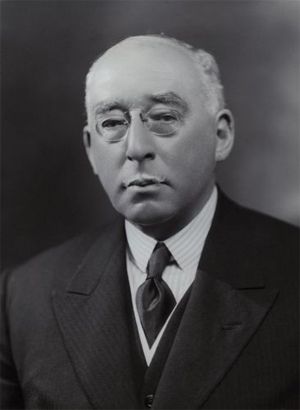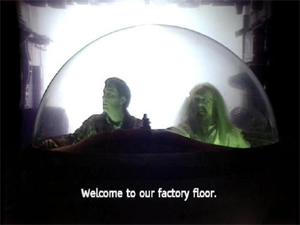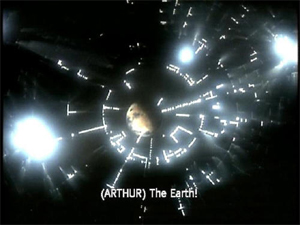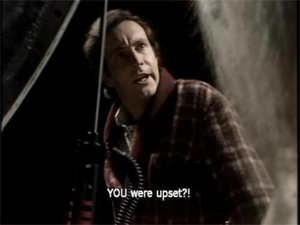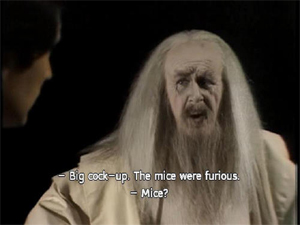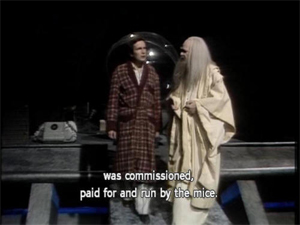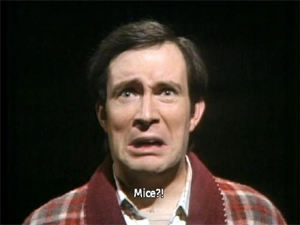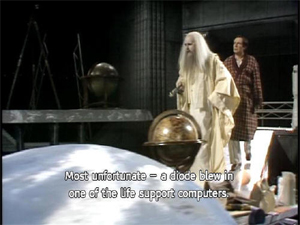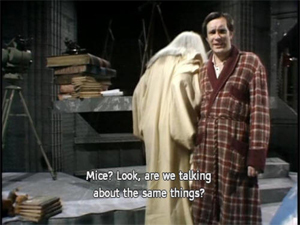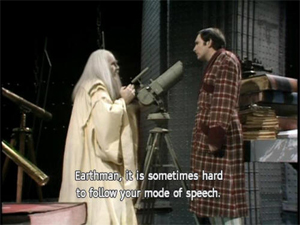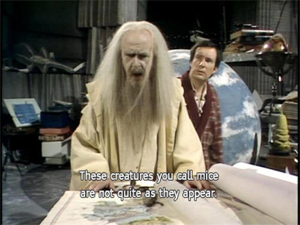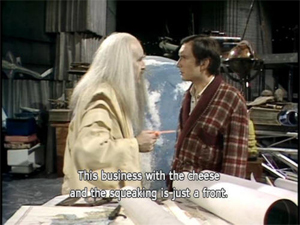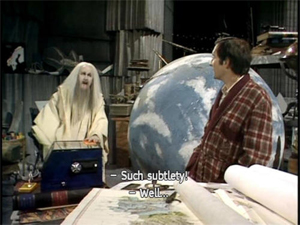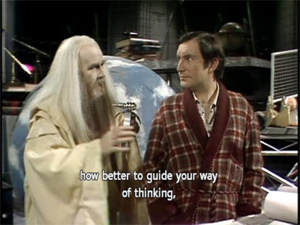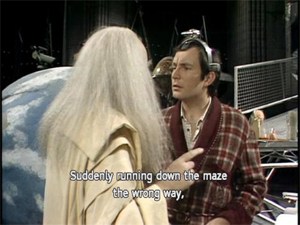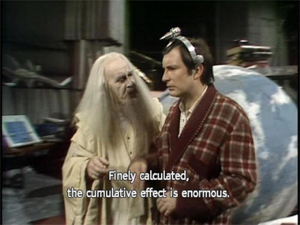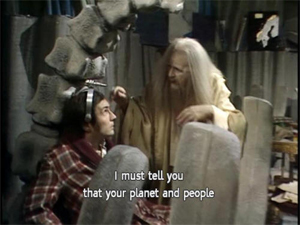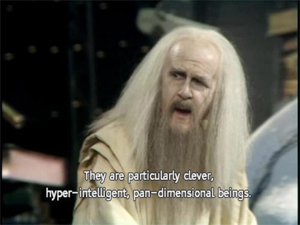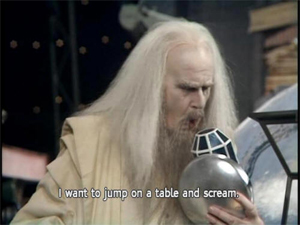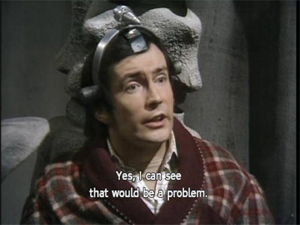Periyar E. V. Ramasamy [E.V.R.] [Vaikom Veerar] [Venthaadi Venthan]
by Wikipedia
Accessed: 8/18/20
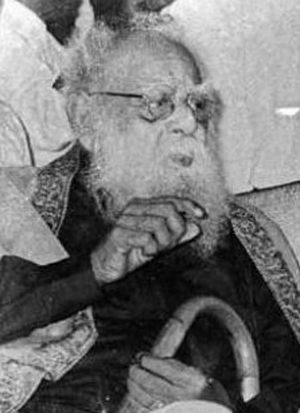
Periyar E. V. Ramasamy
Thanthai Periyar E. V. Ramasamy
President of Dravidar Kazhagam
In office: 27 August 1944 – 24 December 1973
Preceded by: Position Established
Succeeded by: Annai E. V. R. Maniammai
Head of Justice Party
In office: 1939 – 27 August 1944
Inaugural Holder: C. Natesa Mudaliar
Preceded by: Ramakrishna Ranga Rao of Bobbili
Succeeded by: P. T. Rajan
Personal details
Born: 17 September 1879, Erode, Madras Presidency, British India (present-day Tamil Nadu, India)
Died: 24 December 1973 (aged 94), Vellore, Tamil Nadu, India
Resting place: Periyar Ninaividam
Nationality: Indian
Political party: Dravidar Kazhagam
Other political affiliations: Indian National Congress; Justice Party
Spouse(s): Annai E. V. R. Nagammai (m. 1899; died 1933); Annai E. V. R. Maniammai (m. 1948)
Occupation: Activist politician social reformer
Nickname(s): E.V.R., Vaikom Veerar, Venthaadi Venthan
Erode Venkatappa Ramasamy[1] (17 September 1879 – 24 December 1973), commonly known as Periyar, also referred to as Thanthai Periyar, was an Indian social activist and politician who started the Self-Respect Movement and Dravidar Kazhagam. He is known as the 'Father of the Dravidian movement'.[2] He did notable work against Brahminical dominance and gender and caste inequality in Tamil Nadu.[3][4][5]
E.V. Ramasamy joined the Indian National Congress in 1919, but resigned in 1925 when he felt that the party was only serving the interests of Brahmins. He questioned the subjugation of non-Brahmin Dravidians as Brahmins enjoyed gifts and donations from non-Brahmins but opposed and discriminated against non-Brahmins in cultural and religious matters.[6][7] In 1924, E.V. Ramasamy participated in non-violent agitation (satyagraha) in Vaikom, Kerala. From 1929 to 1932 Ramasamy made a tour of British Malaya, Europe, and Russia which influenced him.[how?][8] In 1939, E.V. Ramasamy became the head of the Justice Party,[9] and in 1944, he changed its name to Dravidar Kazhagam.[10] The party later split with one group led by C. N. Annadurai forming the Dravida Munnetra Kazhagam (DMK) in 1949.[10] While continuing the Self-Respect Movement, he advocated for an independent Dravida Nadu (land of the Dravidians).[11]
E.V. Ramasamy promoted the principles of rationalism, self-respect, women’s rights and eradication of caste. He opposed the exploitation and marginalisation of the non-Brahmin Dravidian people of South India and the imposition of what he considered Indo-Aryan India.[12]
Early years

B. R. Ambedkar with Periyar when they met in connection with a Buddhist conference in Rangoon, Myanmar in 1954.
Erode Venkata Ramasamy was born on 17 September 1879 to a Kannada[13] Balija merchant family[14][15][16] in Erode, then a part of the Coimbatore district of the Madras Presidency.[17] E. V. Ramasamy's father is a,Venkatappa Nayakar (or Venkata), and his mother was Chinnathyee, Muthammal. He had one elder brother named Krishnaswamy and two sisters named Kannamma and Ponnuthoy.[1][17] He later came to be known as "Periyar" meaning 'respected one' or 'elder' in the Tamil.[1][18][19][20][21]
E. V. Ramasamy married when he was 19, and had a daughter who lived for only 5 months. His first wife, Nagammai, died in 1933.[22] E.V. Ramasamy married for a second time in July 1948.[23] His second wife, Maniammai, continued E. V. Ramasamy's social work after his death in 1973, and his ideas then were advocated by Dravidar Kazhagam.[24]
In 1929, E. V. Ramasamy announced the deletion of his caste title Naicker from his name at the First Provincial Self-Respect Conference of Chengalpattu.[25] He could speak three Dravidian languages: Kannada, Telugu and Tamil.[26][26][27][28][29][citation needed][30][31] Periyar attended school for five years after which he joined his father's trade at the age of 12. He used to listen to Tamil Vaishnavite gurus who gave discourses in his house enjoying his father's hospitality. At a young age, he began questioning the apparent contradictions in the Hindu mythological stories.[1] As Periyar grew, he felt that people used religion only as a mask to deceive innocent people and therefore took it as one of his duties in life to warn people against superstitions and priests.[32]
E.V. Ramasamy's father arranged for his wedding when he was nineteen. The bride, Nagammai, was only thirteen. Despite having an arranged marriage, Periyar and Nagammai were already in love with each other.[citation needed] Nagammai actively supported her husband in his later public activities and agitation. Two years after their marriage, a daughter was born to them. However, their daughter died when she was five months old. The couple had no more children.[22]
Kasi Pilgrimage Incident
In 1904, E.V. Ramasamy went on a pilgrimage to Kasi to visit the revered Shiva temple of Kashi Vishwanath.[1] Though regarded as one of the holiest sites of Hinduism, he witnessed immoral activities such as begging, and floating dead bodies.[1] His frustrations extended to functional Hinduism in general when he experienced what he called Brahmanic exploitation.[33]
However, one particular incident in Kasi had a profound impact on E.V. Ramasamy's ideology and future work. At the worship site there were free meals offered to guests. To E.V. Ramasamy's shock, he was refused meals at choultries, which exclusively fed Brahmins. Due to extreme hunger, E.V. Ramasamy felt compelled to enter one of the eateries disguised as a Brahmin with a sacred thread on his bare chest, but was betrayed by his moustache. The gatekeeper at the temple concluded that E.V. Ramasamy was not a Brahmin, as Brahmins were not permitted by the Hindu shastras to have moustaches. He not only prevented Periyar's entry but also pushed him rudely into the street.[1]
As his hunger became intolerable, Periyar was forced to feed on leftovers from the streets. Around this time, he realised that the eatery which had refused him entry was built by a wealthy non-Brahmin from South India.[1] This discriminatory attitude dealt a blow to Periyar's regard for Hinduism, for the events he had witnessed at Kasi were completely different from the picture of Kasi he had in mind, as a holy place which welcomed all.[1] Ramasamy was a theist until his visit to Kasi, after which his views changed and he became an atheist.[34]
Member of Congress Party (1919–1925)
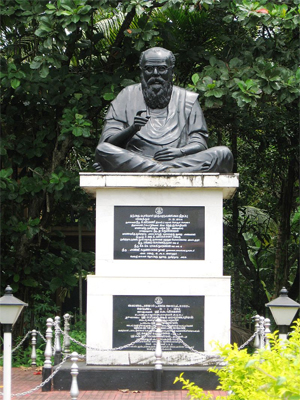
E.V. Ramasamy statue at Vaikom town in Kottayam, Kerala
E.V. Ramasamy joined the Indian National Congress in 1919 after quitting his business and resigning from public posts. He held the chairmanship of Erode Municipality and wholeheartedly undertook constructive programs spreading the use of Khadi, picketing toddy shops, boycotting shops selling foreign cloth, and eradicating untouchability. In 1921, Periyar courted imprisonment for picketing toddy shops in Erode. When his wife as well as his sister joined the agitation, it gained momentum, and the administration was forced to come to a compromise. He was again arrested during the Non-Cooperation movement and the Temperance movement.[6] In 1922, Periyar was elected the President of the Madras Presidency Congress Committee during the Tirupur session, where he advocated strongly for reservation in government jobs and education. His attempts were defeated in the Congress party due to discrimination and indifference, which led to his leaving the party in 1925.[7]
Vaikom Satyagraha (1924–1925)
Main article: Vaikom Satyagraha
According to the prevalent caste system in Kerala and the rest of India, low-caste Hindus were denied entry into temples. In Kerala, they were denied permission to walk on the roads that led to the temples also. (Kerala state was formed in 1956; earlier it was broadly divided into Malabar (North Kerala), Cochin and Travancore kingdoms).
In the Kakinada meet of the Congress Party in 1923, T K Madhavan presented a report citing the discrimination faced by the depressed castes in Kerala. That session decided to promote movements against untouchability.
In Kerala, a committee was formed comprising people of different castes to fight untouchability in the region. The committee was chaired by K Kelappan; the rest of the members were T K Madhavan, Velayudha Menon, Kurur Neelakantan Namboodiripad and T R Krishnaswami Iyer. In early 1924, they decided to launch a ‘Keralaparyatanam’ to gain temple entry and also the right to use public roads for every Hindu irrespective of caste or creed.
The movement gained all-India prominence and support came from far and wide. The Akalis of Punjab lend their support by setting up kitchens to provide food to the Satyagrahis. Even Christian and Muslim leaders came forward for support. This was shunned by Gandhiji who wanted the movement to be an intra-Hindu affair. On advice from Gandhiji, the movement was withdrawn temporarily in April 1924. After the talks with caste-Hindus failed, the leaders resumed the movement. Leaders T K Madhavan and K P Kesava Menon were arrested. E V Ramaswamy (Periyar) came from Tamil Nadu to give his support. He was arrested.
On 1 October 1924, a group of savarnas (forward castes) marched in a procession and submitted a petition to the Regent Maharani Sethulakshmi Bai of Travancore with about 25000 signatures for temple entry to everyone. Gandhiji also met with the Regent Maharani. This procession of savarnas was led by Mannath Padmanabhan Nair. Starting with about 500 people at Vaikom, the number increased to about 5000 when the procession reached Thiruvananthapuram in November 1924.
In February 1924, they decided to launch a ‘Keralaparyatanam’ to gain temple entry and also the right to use public roads for every Hindu irrespective of caste or creed.
In Vaikom, a small town in Kerala state, then Travancore, there were strict laws of untouchability in and around the temple area. Dalits, also known as Harijans, were not allowed into the close streets around and leading to the temple, let alone inside it. Anti-caste feelings were growing and in 1924 Vaikom was chosen as a suitable place for an organised Satyagraha. Under his guidance a movement had already begun with the aim of giving all castes the right to enter the temples. Thus, agitations and demonstrations took place. On 14 April, Periyar and his wife Nagamma arrived in Vaikom. They were immediately arrested and imprisoned for participation. In spite of Gandhi's objection to non-Keralites and non-Hindus taking part, Periyar and his followers continued to give support to the movement until it was withdrawn. He received the title Vaikom Veeran, given by his followers who participated in the Satyagraha.[35][36][37]
The way in which the Vaikom Satyagraha events have been recorded provides a clue to the image of the respective organisers. In an article entitle Gandhi and Ambedkar, A Study in Leadership, Eleanor Zelliot relates the 'Vaikom Satyagraha', including Gandhi's negotiations with the temple authorities in relation to the event. Furthermore, the editor of E.V. Ramasamy's Thoughts states that Brahmins purposely suppressed news about E.V. Ramasamy's participation. A leading Congress magazine, Young India, in its extensive reports on Vaikom never mentions E.V. Ramasamy.[33]
In Kerala, a committee was formed comprising people of different castes to fight untouchability in the region. The committee chaired by K Kelappan, composed of T K Madhavan, Velayudha Menon, Kurur Neelakantan Namboodiripad and T R Krishnaswami Iyer. In February 1924, they decided to launch a ‘Keralaparyatanam’ to gain temple entry and also the right to use public roads for every Hindu irrespective of caste or creed.
Self-Respect Movement
Main article: Self-Respect Movement
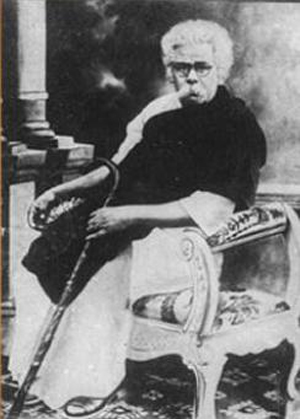
Periyar during the early years of Self-Respect Movement
Periyar and his followers campaigned constantly to influence and pressure the government to take measures to remove social inequality,(abolish untouchability, manual scavenging system etc) even while other nationalist forerunners focused on the struggle for political independence. The Self-Respect Movement was described from the beginning as "dedicated to the goal of giving non-Brahmins a sense of pride based on their Dravidian past".[38]
In 1952, the Periyar Self-Respect Movement Institution was registered with a list of objectives of the institution from which may be quoted as
for the diffusion of useful knowledge of political education; to allow people to live a life of freedom from slavery to anything against reason and self respect; to do away with needless customs, meaningless ceremonies, and blind superstitious beliefs in society; to put an end to the present social system in which caste, religion, community and traditional occupations based on the accident of birth, have chained the mass of the people and created "superior" and "inferior" classes... and to give people equal rights; to completely eradicate untouchability and to establish a united society based on brother/sisterhood; to give equal rights to women; to prevent child marriages and marriages based on law favourable to one sect, to conduct and encourage love marriages, widow marriages, inter caste and inter-religious marriages and to have the marriages registered under the Civil Law; and to establish and maintain homes for orphans and widows and to run educational institutions.[33]
Propagation of the philosophy of self respect became the full-time activity of Periyar since 1925. A Tamil weekly Kudi Arasu started in 1925, while the English journal Revolt started in 1928 carried on the propaganda among the English educated people.[39] The Self-Respect Movement began to grow fast and received the sympathy of the heads of the Justice Party from the beginning. In May 1929, a conference of Self-Respect Volunteers was held at Pattukkotai under the presidency of S. Guruswami. K.V. Alagiriswami took charge as the head of the volunteer band. Conferences followed in succession throughout the Tamil districts of the former Madras Presidency. A training school in Self-Respect was opened at Erode, the home town of Periyar. The object was not just to introduce social reform but to bring about a social revolution to foster a new spirit and build a new society.[40]
International travel (1929–1932)
Between 1929 and 1935, under the strain of World Depression, political thinking worldwide received a jolt from the spread of international communism.[8] Indian political parties, movements and considerable sections of leadership were also affected by inter-continental ideologies. The Self-Respect Movement also came under the influence of the leftist philosophies and institutions. E.V. Ramasamy, after establishing the Self-Respect Movement as an independent institution, began to look for ways to strengthen it politically and socially. To accomplish this, he studied the history and politics of different countries, and personally observed these systems at work.[8]
E.V. Ramasamy toured Malaya for a month, from December 1929 to January 1930, to propagate the self-respect philosophy. Embarking on his journey from Nagapattinam with his wife Nagammal and his followers, E.V. Ramasamy was received by 50,000 Tamil Malaysians in Penang. During the same month, he inaugurated the Tamils Conference, convened by the Tamils Reformatory Sangam in Ipoh, and then went to Singapore. In December 1931 he undertook a tour of Europe, accompanied by S. Ramanathan and Erode Ramu, to personally acquaint himself with their political systems, social movements, way of life, economic and social progress and administration of public bodies. He visited Egypt, Greece, Turkey, the Soviet Union, Germany, England, Spain, France and Portugal, staying in Russia for three months. On his return journey he halted at Ceylon and returned to India in November 1932.[8]
The tour shaped the political ideology of E.V. Ramasamy to achieve the social concept of Self-Respect. The communist system in the Soviet Union appealed to him as appropriately suited to deal with the social ills of the country. Thus, on socio-economic issues Periyar was Marxist, but he did not advocate for abolishing private ownership.[41] Immediately after his return, E.V. Ramasamy, in alliance with the enthusiastic communist, M. Singaravelar, began to work out a socio-political scheme incorporating socialist and self-respect ideals. This marked a crucial stage of development in the Self-Respect Movement which got politicised and found its compatibility in Tamil Nadu.[8]
Opposition to Hindi
Main article: Anti-Hindi agitations
In 1937, when Chakravarthi Rajagopalachari became the Chief Minister of Madras Presidency, he introduced Hindi as a compulsory language of study in schools, thereby igniting a series of anti-Hindi agitations.[11] Tamil nationalists, the Justice Party under Sir A. T. Panneerselvam, and E.V. Ramasamy organised anti-Hindi protests in 1938 which ended with numerous arrests by the Rajaji government.[42]
During the same year, the slogan "Tamil Nadu for Tamilians"[43] was first used by E.V. Ramasamy in protest against the introduction of Hindi in schools. He claimed that the introduction of Hindi was a dangerous mechanism used by the Aryans to infiltrate Dravidian culture.[43] He reasoned that the adoption of Hindi would make Tamils subordinate to the Hindi-speaking North Indians. E.V. Ramasamy claimed that Hindi would not only halt the progress of Tamil people, but would also completely destroy their culture and nullify the progressive ideas that had been successfully inculcated through Tamil in the recent decades.[44]
Cutting across party lines, South Indian politicians rallied together in their opposition to Hindi.[44] There were recurrent anti-Hindi agitations in 1948, 1952 and 1965.[45]
As President of the Justice Party (1938–1944)
Main article: Justice Party (India)
A political party known as the South Indian Libertarian Federation (commonly referred to as Justice Party) was founded in 1916, principally to oppose the economic and political power of the Brahmin groups. The party's goal was to render social justice to the non-Brahmin groups. To gain the support of the masses, non-Brahmin politicians began propagating an ideology of equality among non-Brahmin castes. Brahmanical priesthood and Sanskritic social class-value hierarchy were blamed for the existence of inequalities among non-Brahmin caste groups.[10]
In 1937, when the government required that Hindi be taught in the school system, E.V. Ramasamy organised opposition to this policy through the Justice Party. After 1937, the Dravidian movement derived considerable support from the student community. In later years, opposition to Hindi played a big role in the politics of Tamil Nadu. The fear of the Hindi language had its origin in the conflict between Brahmins and non-Brahmins. To the Tamils, acceptance of Hindi in the school system was a form of bondage. When the Justice Party weakened in the absence of mass support, E.V. Ramasamy took over the leadership of the party after being jailed for opposing Hindi in 1939.[9] Under his tutelage the party prospered, but the party's conservative members, most of whom were rich and educated, withdrew from active participation.[10]
Dravidar Kazhagam (1944–onwards)
Main article: Dravidar Kazhagam
Formation of the Dravidar Kazhagam
At a rally in 1944, Periyar, in his capacity as the leader of the Justice Party, declared that the party would henceforth be known as the Dravidar Kazhagam, or "Dravidian Association". However, a few who disagreed with Periyar started a splinter group, claiming to be the original Justice Party. This party was led by veteran Justice Party leader P. T. Rajan and survived until 1957.
The Dravidar Kazhagam came to be well known among the urban communities and students. Villages were influenced by its message. Hindi, and ceremonies that had become associated with Brahmanical priesthood, were identified as alien symbols that should be eliminated from Tamil culture. Brahmins, who were regarded as the guardians of such symbols, came under verbal attack.[10] From 1949 onwards, the Dravidar Kazhagam intensified social reformist work and put forward the fact that superstitions were the cause for the degeneration of Dravidians. The Dravidar Kazhagam vehemently fought for the abolition of untouchability amongst the Dalits. It also focused its attention on the liberation of women, women's education, willing marriage, widow marriage, orphanages and mercy homes.[46]
Split with Annadurai
Main article: Dravida Munnetra Kazhagam
In 1949, E.V. Ramasamy's chief lieutenant, Conjeevaram Natarajan Annadurai, established a separate association called the Dravida Munnetra Kazhagam (DMK), or Dravidian Progressive Federation.[10] This was due to differences between the two, while Periyar advocated a separate independent Dravidian or Tamil state, Annadurai compromised with the Delhi government, at the same time claiming increased state independence.[47] E.V. Ramasamy was convinced that individuals and movements that undertake the task of eradicating the social evils in the Indian sub-continent have to pursue the goal with devotion and dedication without deviating from the path and with uncompromising zeal. Thus, if they contest elections aiming to assume political power, they would lose vigour and a sense of purpose. But among his followers, there were those who had a different view, wanting to enter into politics and have a share in running the government. They were looking for an opportunity to part with E.V. Ramasamy.[citation needed] Thus, when E.V. Ramasamy married Maniammai on 9 July 1948, they quit the Dravidar Kazhagam, stating that E.V. Ramasamy married Maniammayar who was the daughter of Kanagasabhai when he was 70 and she 32. Those who parted company with E.V. Ramasamy joined the DMK.[23] Though the DMK split from the Dravidar Kazhagam, the organisation made efforts to carry on E.V. Ramasamy's Self-Respect Movement to villagers and urban students. The DMK advocated the thesis that the Tamil language was much richer than Sanskrit and Hindi in content, and thus was a key which opened the door to subjects to be learned.[10] The Dravidar Kazhagam continued to counter Brahminism, Indo-Aryan propaganda, and uphold the Dravidians' right of self-determination.[48]
Later years
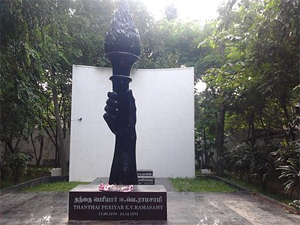
Periyar Thidal at Vepery, where Periyar's body was buried.
In 1956, despite warnings from P. Kakkan, the President of the Tamil Nadu Congress Committee, Periyar organised a procession to the Marina to burn pictures of the Hindu God Rama.[49] Periyar was subsequently arrested and confined to prison.[49]
The activities of Periyar continued when he went to Bangalore in 1958 to participate in the All India Official Language Conference. There he stressed the need to retain English as the Union Official Language instead of Hindi. Five years later, Periyar travelled to North India to advocate the eradication of the caste system. In his last meeting at Thiagaraya Nagar, Chennai on 19 December 1973, Periyar declared a call for action to gain social equality and a dignified way of life. On 24 December 1973, Periyar died at the age of 94.[23]
Principles and legacy
Periyar spent over fifty years giving speeches, propagating the realisation that everyone is an equal citizen and the differences on the basis of caste and creed were man-made to keep the innocent and ignorant as underdogs in the society. Although Periyar's speeches were targeted towards the illiterate and more mundane masses, scores of educated people were also swayed.[50] Periyar viewed reasoning as a special tool. According to him, all were blessed with this tool, but very few used it. Thus Periyar used reasoning with respect to subjects of social interest in his presentations to his audiences.[50] Communal differences in Tamil society were considered by many to be deep-rooted features until Periyar came to the scene.[51]
Rationalism
The bedrock of E.V. Ramasamy’s principles and the movements that he started was rationalism. He thought that an insignificant minority in society was exploiting the majority and trying to keep it in a subordinate position forever. He wanted the exploited to sit up and think about their position, and use their reason to realise that they were being exploited by a handful of people. If they started thinking, they would realise that they were human beings like the rest, that birth did not and should not endow superiority over others and that they must awaken themselves and do everything possible to improve their own lot.[50]
Likewise, E.V. Ramasamy explained that wisdom lies in thinking and that the spear-head of thinking is rationalism. On caste, he stated that no other living being harms or degrades its own class. But man, said to be a rational living being, does these evils. The differences, hatred, enmity, degradation, poverty, and wickedness, now prevalent in the society are due to lack of wisdom and rationalism and not due to God or the cruelty of time. E.V. Ramasamy had written in his books and magazines dozens of times of various occasions that the British rule is better than self-rule[52]
E.V. Ramasamy also blamed the capitalists for their control of machineries, creating difficulties for the workers. According to his philosophy, rationalism, which has to lead the way for peaceful life to all, had resulted in causing poverty and worries to the people because of dominating forces. He stated that there is no use of simply acquiring titles or amassing wealth if one has no self-respect or scientific knowledge. An example he gave was the West sending messages to the planets, while the Tamil society in India were sending rice and cereals to their dead forefathers through the Brahmins.[52]
In a message to the Brahmin community, Periyar stated, "in the name of god, religion, and sastras you have duped us. We were the ruling people. Stop this life of cheating us from this year. Give room for rationalism and humanism".[53] He added that "any opposition not based on rationalism, science, or experience will one day or another, reveal the fraud, selfishness, lies and conspiracies".[53]
Self-respect
Main article: Self-Respect Movement
Periyar's philosophy of self-respect was based on his image of an ideal world and a universally accepted one. His philosophy preaches that human actions should be based on rational thinking. Further, the outcome of the natural instinct of human beings is to examine every object and every action and even nature with a spirit of inquiry, and to refuse to submit to anything irrational as equivalent to slavery. Thus, the philosophy of self-respect taught that human actions should be guided by reason, right and wrong should follow from rational thinking and conclusions drawn from reason should be respected under all circumstances. Freedom means respect to thoughts and actions considered 'right' by human beings on the basis of 'reason'. There is not much difference between 'freedom' and 'self-respect'.[54]
Periyar's foremost appeal to people was to develop self-respect. He preached that the Brahmins had monopolised and cheated other communities for decades and deprived them of self-respect. He stated that most Brahmins claimed to belong to a "superior" community with the reserved privilege of being in charge of temples and performing archanas. He felt that they were trying to reassert their control over religion by using their superior caste status to claim the exclusive privilege to touch idols or enter the sanctum sanctorum.[51]
Women’s rights
Main article: Periyar E. V. Ramasamy and women's rights
As a rationalist and ardent social reformer, Periyar advocated forcefully throughout his life that women should be given their legitimate position in society as the equals of men and that they should be given good education and have the right to property. He thought age and social customs was not a bar in marrying women. He was keen that women should realise their rights and be worthy citizens of their country.[55]
Periyar fought against the orthodox traditions of marriage as suppression of women in Tamil Nadu and throughout the Indian sub-continent. Though arranged marriages were meant to enable a couple to live together throughout life, it was manipulated to enslave women.[56] Much worse was the practice of child marriages practised throughout India at the time. It was believed that it would be a sin to marry after puberty.[57] Another practice, which is prevalent today, is the dowry system where the bride's family is supposed to give the husband a huge payment for the bride. The purpose of this was to assist the newly wedded couple financially, but in many instances dowries were misused by bridegrooms. The outcome of this abuse turned to the exploitation of the bride's parents wealth, and in certain circumstances, lead to dowry deaths.[58] There have been hundreds of thousands of cases where wives have been murdered, mutilated, and burned alive because the father of the bride was unable to make the dowry payment to the husband. Periyar fiercely stood up against this abuse meted out against women.[59]
Women in India also did not have rights to their families' or husbands' property. Periyar fought fiercely for this and also advocated for women to have the right to separate or divorce their husbands under reasonable circumstances.[59] While birth control remained taboo in society of Periyar's time, he advocated for it not only for the health of women and population control, but for the liberation of women.[60]
He criticised the hypocrisy of chastity for women and argued that it should either apply also to men, or not at all for both genders.[61] While fighting against this, Periyar advocated getting rid of the Devadasi system. In his view it was an example of a list of degradations of women, attaching them to temples for the entertainment of others, and as temple prostitutes.[62] Further, for the liberation of women, Periyar pushed for their right to have an education and to join the armed services and the police force.[61][63]
According to biographer M.D. Gopalakrishnan, Periyar and his movement achieved a better status for women in Tamil society. Periyar held that, in matters of education and employment, there should be no difference between men and women. Gopalakrishnan states that Periyar's influence in the State departments and even the Center made it possible for women to join police departments and the army. Periyar also spoke out against child marriage.[51]
Social reform and eradication of caste
Main articles: Periyar E.V. Ramasamy and social reform and Periyar E. V. Ramasamy and the eradication of caste
Periyar wanted thinking people to see their society as far from perfect and in urgent need of reform. He wanted the government, the political parties and social workers to identify the evils in society and boldly adopt measures to remove them.[64] Periyar's philosophy did not differentiate social and political service.[65] According to him, the first duty of a government is to run the social organisation efficiently, and the philosophy of religion was to organise the social system. Periyar stated that while Christian and Islamic religions were fulfilling this role, the Hindu religion remained totally unsuitable for social progress. He argued that the government was not for the people, but, in a "topsy-turvy" manner, the people were for the government. He attributed this situation to the state of the social system contrived for the advantage of a small group of people.[65]
One of the areas of Periyar's focus was on the upliftment of rural communities. In a booklet called Village Uplift, Periyar pleaded for rural reform. At that time rural India still formed the largest part of the Indian subcontinent, in spite of the ongoing process of urbanisation. Thus, the distinction between rural and urban had meant an economic and social degradation for rural inhabitants. Periyar wanted to eradicate the concept of "village" as a discrimination word among places, just as the concept of "outcast" among social groups. Periyar advocated for a location where neither the name nor the situation or its conditions imply differences among people.[66] He further advocated for the modernisation of villages by providing public facilities such as schools, libraries, radio stations, roads, bus transport, and police stations.[67]
Periyar felt that a small number of cunning people created caste distinctions to dominate Indian society, so he emphasised that individuals must first develop self-respect and learn to analyse propositions rationally. According to Periyar, a self-respecting rationalist would readily realise that the caste system had been stifling self-respect and therefore he or she would strive to get rid of this menace.[68]
Periyar stated that the caste system in South India is, due to Indo-Aryan influence, linked with the arrival of Brahmins from the north. Ancient Tamil Nadu (part of Tamilakkam) had a different stratification of society in four or five regions (Tinai), determined by natural surroundings and adequate means of living.[69] Periyar also argued that birds, animals, and worms, which are considered to be devoid of rationalism do not create castes, or differences of high and low in their own species. But man, considered to be a rational being, was suffering from these because of religion and discrimination.[70]
The Samathuvapuram (Equality Village) social equality system introduced by the Government of Tamil Nadu in the late 1990s is named after Ramasamy.[71]

